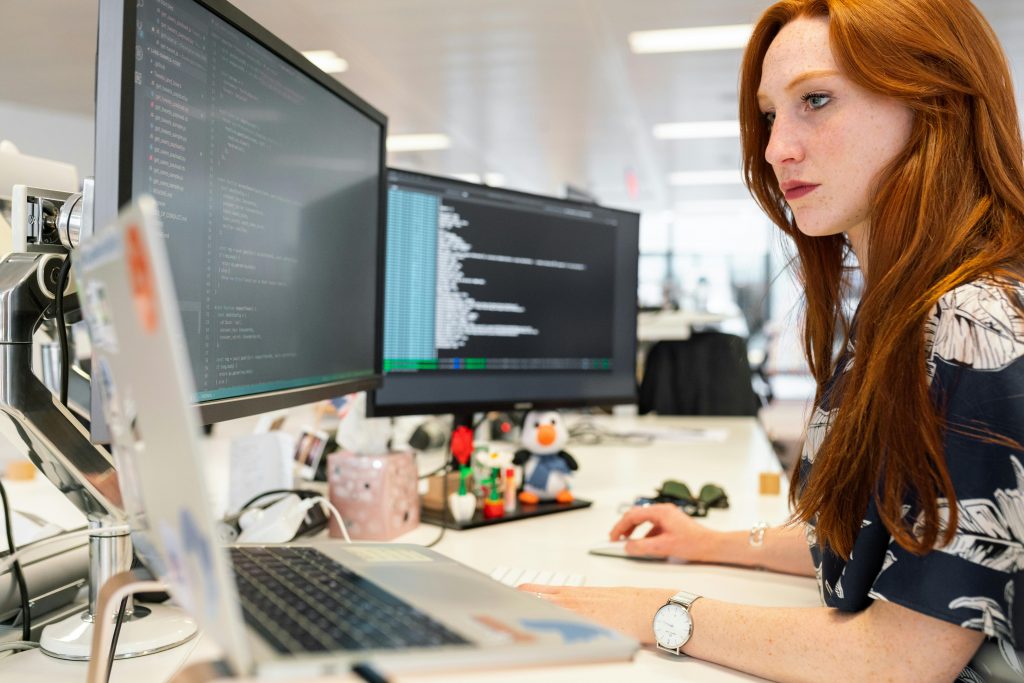The term ‘Coding Platform’ can denote a type of hardware, on which you can code, or a particular operating system, or even a custom environment that’s pre-built and designed to allow the easy creation of games. In truth it’s quite a loose term, as a Coding Platform can be a mixture of all these ingredients, it’s simply down to what programming language you intend to code in and what your end goals are.
Coding can be one of those experiences that sounds fantastic, but to get going with it, is often confusing. After all, there’s a plethora of languages to choose from, numerous apps that will enable you to code in a specific, or range, of languages and an equally huge amount of third-party software to consider. Then you access the Internet and discover that there are countless coding tutorials available, for the language in which you’ve decided you want to program, alongside even more examples of code. It’s all a little too much at times.
The trick is to slow down and, to begin with, not look too deeply into coding. Like all good projects, you need a solid foundation on which to build your skill and to have all the necessary tools available to hand to enable you to complete the basic steps. This is where creating a coding platform comes in, as it will be your learning foundation while you begin to take your first tentative steps into the wider world of coding.
Hardware
Thankfully, coding at the foundation level doesn’t require specialist equipment, or a top of the range, liquid hydrogen-cooled PC. If you own a computer, no matter how basic, you can begin to learn how to code. Naturally, if your computer in question is a Commodore 64 then you may have some difficulty following a modern language tutorial, but some of the best programmers around today started on an 8-bit machine, so there’s hope yet.
Access to the Internet is necessary to download, install and update the coding development environment, alongside a computer with either: Windows 10, macOS, or Linux installed. You can use other operating systems, but these are the ‘big three’ and you will find that most code resources are written with one, or all of these, in mind.
Software
In terms of software, most of the development environments – the tools that allow you to code, compile the code and execute it – are freely available to download and install. There are some specialist tools available that will cost, but at this level they’re not necessary; so don’t be fooled into thinking you need to purchase any extra software in order to start learning how to code.
Over time, you may find yourself changing from the mainstream development environment and using a collection of your own, discovered, tools in which to write your code. It’s all personal preference in the end and as you become more experienced, you will start to use different tools to get the job done.
Operating Systems
Windows 10 is the most used operating system in the world, so it’s natural that the vast majority of coding tools are written for Microsoft’s leading operating system. However, don’t discount macOS and especially Linux. macOS users enjoy an equal number of coding tools to their Windows counterparts. In fact, you will probably find that a lot of professional coders use a Mac over a PC, simply because of the fact that the Mac operating system is built on top of Unix (the command-line OS that powers much of the world’s filesystems and servers). This Unix layer lets you test programs in almost any language without using a specialised IDE.
Linux, however, is by far one of the most popular and important, coding operating systems available. Not only does it have a Unix-like backbone, but also it’s also free to download, install and use and comes with most of the tools necessary to start learning how to code. Linux powers most of the servers that make up the Internet. It’s used on nearly all of the top supercomputers, as well as specifically in organisations such as NASA, CERN and the military and it forms the base of Android-powered devices, smart TVs and in-car systems. Linux, as a coding platform, is an excellent idea and it can be installed inside a virtual machine without ever affecting the installation of Windows or macOS.
Virtual Machines
A virtual machine is a piece of software that allows you to install a fully working, operating system within the confines of the software itself. The installed OS will allocate user-defined resources from the host computer, providing memory, hard drive space etc, as well as sharing the host computer’s Internet connection.
The advantage of a virtual machine is that you can work with Linux, for example, without it affecting your currently installed host OS. This means that you can have Windows 10 running, launch your virtual machine client, boot into Linux and use all the functionality of Linux while still being able to use Windows.
This, of course, makes it a fantastic coding platform, as you can have different installations of operating systems running from the host computer while using different coding languages. You can test your code without fear of breaking your host OS and it’s easy to return to a previous configuration without the need to reinstall everything again.
Virtualisation is the key to most big companies now. You will probably find, for example, rather than having a single server with an installation of Windows Server, the IT team have instead opted for a virtualised environment whereby each Windows Server instance is a virtual machine running from several powerful machines. This cuts down on the number of physical machines, allows the team to better manage resources and enables them to deploy an entire server dedicated to a particular task in a fraction of the time.
The Raspberry Pi
If you haven’t already heard of the Raspberry Pi, then we suggest you head over to www.raspberrypi.org, and check it out. In short, the Raspberry Pi is a small, fully functional computer that comes with its own customised Linux-based operating system, pre-installed with everything you need to start learning how to code in Python, C++, Scratch and more.
It’s incredibly cheap, costing around £35 and allows you to utilise different hardware, in the form of robotics and electronics projects, as well as offering a complete desktop experience. Although not the most powerful computing device in the world, the Raspberry Pi has a lot going for it, especially in terms of being one of the best coding platforms available.
MINIX NEO N42C-4
The NEO N42C-4 is an extraordinarily small computer from mini-PC developer, MINIX. Measuring just 139 x 139 x 30mm, this Intel N4200 CPU powered, Windows 10 Pro pre-installed computer is one of the best coding platforms we’ve come across.
The N42C-4 comes with a 32GB eMMC MLC flash drive along with 4GB of memory, however, you’re able to further improve that thanks to the single 2280 M.2 slot that can take up to a 512GB SSD and dual-memory SODIMM slots that can see the PC’s memory increased to an impressive 16GB. These, alongside the turbo boosted 2.5GHz CPU, mean you’re buying an extremely capable Windows Pro computer.
The beauty, of course, lies in the fact that with increased storage and memory available, you’re able to create a computer that can easily host multiple virtual machines. The virtual machines can cover Linux, Android and other operating systems, allowing you to write and test cross-platform code without fear of damaging, or causing problems, with other production or home computers.
The MINIX NEO N42C-4 starts at around £250, with the base 32GB eMMC and 4GB of memory. You’ll need to add another hundred and fifty, or so, to increase the specifications, but consider that a license for Windows 10 Pro alone costs £219 from the Microsoft Store and you can begin to see the benefits of opting for a more impressive hardware foundation over the likes of the Raspberry Pi.
Your own Coding Platform
Whichever method you choose, as you gain experience and favour one language over another, your coding platform will probably change. Don’t be afraid to experiment along the way, as you will eventually create your own unique platform that can handle all the code you enter into it.


